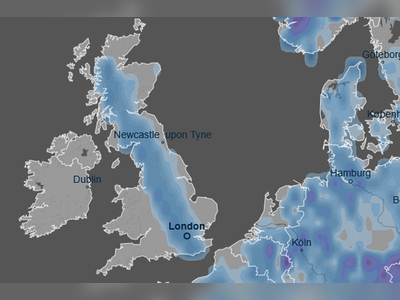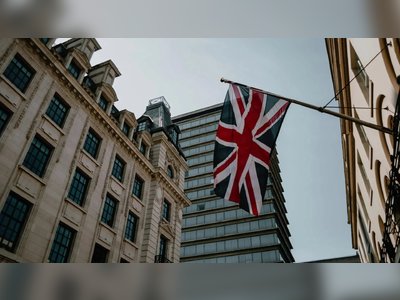
Traffic Noise Is a Silent Killer
In 2011, Germany’s Frankfurt Airport—the country’s busiest—unveiled its fourth runway. This addition sparked major protests, and for years demonstrators returned to the airport every Monday. “It’s destroying my life,” one protester told Reuters in 2012. “Every time I go into my garden, all I can hear and see are planes right above.”
The new runway also channeled dozens of aircraft directly over the house of Thomas Münzel, a cardiologist at the University Medical Center of Mainz. “I have lived close to the German Autobahn and close to inner-city train tracks,” he says. “Aircraft noise is the most annoying by far.” Münzel had read a 2009 World Health Organization report linking noise to heart problems, but evidence at the time was thin. Driven in part by concern for his own health, in 2011 he shifted the focus of his research to learn more.
Exposure to loud noise has long been linked with hearing loss. But the ruckus of planes and cars takes a toll beyond the ears: Traffic noise has been flagged as a major urban environmental stressor, second only to air pollution. In the last decade, a growing body of research more directly links air and road-traffic noise to heightened risks for a number of cardiovascular ailments—and scientists are starting to pinpoint the mechanisms at play.
Evidence of noise’s physiological effects—whether on cells and organs or entire populations—“is really coming together and painting a picture of the problem,” says Mathias Basner, a psychiatrist and epidemiologist at the University of Pennsylvania and president of the International Commission on the Biological Effects of Noise. Yet, he adds, few people are aware of the severity of what his colleagues call a “silent killer.”
Estimates suggest that roughly a third of Americans are regularly exposed to unhealthy levels of noise, typically defined as starting around 70 to 80 decibels. For comparison, normal conversation is about 60 dB, cars and trucks range from 70 to 90 dB, and sirens and airplanes can reach 120 dB or more.
Numerous studies link chronic exposure to environmental noise to an increased risk of heart-related troubles. People living near the Frankfurt airport, for example, have as much as a 7 percent higher risk of stroke than those living in similar but quieter neighborhoods, according to a 2018 study in Noise & Health that investigated the health data of more than 1 million people. An analysis of nearly 25,000 cardiovascular deaths between 2000 and 2015 among people living near Zurich’s airport saw significant increases in nighttime mortality after airplane flyovers, especially among women, a team reported last year in the European Heart Journal.
As researchers probe the physiology underlying noise’s cardiovascular consequences, they’re zeroing in on a culprit: dramatic changes to the endothelium, the inner lining of arteries and blood vessels. This lining can go from a healthy state to one that’s “activated,” and inflamed, with potentially serious ramifications.
When sound reaches the brain, it activates two important regions: the auditory cortex, which interprets noise, and the amygdala, which manages emotional responses to it. As noise gets louder, and especially during sleep, the amygdala activates a stress response—even if the person isn’t aware of it.
Once initiated, this response releases hormones such as adrenaline and cortisol into the body. Some arteries constrict; others dilate. Blood pressure rises, and sugars and fats flood the bloodstream for quick use by the muscles. The cascading stress response also prompts the creation of harmful molecules that cause oxidative stress and inflammation in the lining of blood vessels. This dysfunctional endothelium meddles with blood flow and affects numerous other processes that, when impaired, contribute to a range of cardiovascular illnesses, including high blood pressure, plaque buildup in arteries, obesity, and diabetes.
Studies on people and mice show that the endothelium doesn’t work as efficiently after just a few days of nighttime airplane-noise exposure, suggesting that loud noise isn’t a concern only for people already at risk for heart and metabolic problems. Healthy adults subjected to recordings of trains during their slumber had impaired blood-vessel function almost immediately, according to a 2019 study published by Münzel and his colleagues in Basic Research in Cardiology.
“We were surprised that young people, after hearing these sounds for just one night, had endothelial dysfunction,” says Münzel, coauthor of an overview on noise and cardiovascular health in the 2020 Annual Review of Public Health. “We always thought this was something that takes years to develop.”
While the data continue to accumulate, untangling cause and effect can be tricky. It’s not easy to conduct long-term sleep experiments or to distinguish between the effects of daytime and nighttime noise—or the effects of the noise itself versus the combined effects of noise and air pollution (which often go hand in hand).
The consequences of environmental noise are also tough to parse due to the subjective nature of sound, says Andreas Xyrichis, a health-services scientist at King’s College in London. Xyrichis studies hospital intensive-care units, where ringing telephones and clattering food dishes can be either comforting or counteractive to recovery, depending on the patient. “We are really trying to make this distinction between decibel levels and perception of noise,” he says.
Despite the remaining questions, there’s a growing recognition of connections between noise pollution and reduced physical health. A 2018 report by the World Health Organization noted that each year, Western Europeans are collectively losing more than 1.6 million years of healthy life because of traffic noise. This calculation is based on the number of premature deaths caused directly by noise exposure, as well as the years lived with noise-induced disability or illness.
And that number is likely to grow: In 2018, 55 percent of people lived in cities, and by 2050 that count is expected to reach nearly 70 percent, the United Nations estimates.
Some governments, heeding public protests, have tried to quiet the clamor of urbanization by adopting nighttime-flight bans, incentivizing quieter technologies, and issuing fines for noise complaints. Individuals can help themselves by ensuring that bedrooms are as quiet as possible: retrofitting windows, hanging noise-reducing curtains, or (if they can afford it) moving to quieter neighborhoods. Cheaper solutions, Basner says, include wearing earplugs at night or moving bedrooms to a quieter part of the home. He believes that people should take such steps even if they don’t find themselves especially fazed by noise.
“If you’re living in Manhattan, you won’t notice how loud it is after a while, because it is normal,” he says. “But if you have habituated to it psychologically, that doesn’t mean it doesn’t have negative health consequences.”











